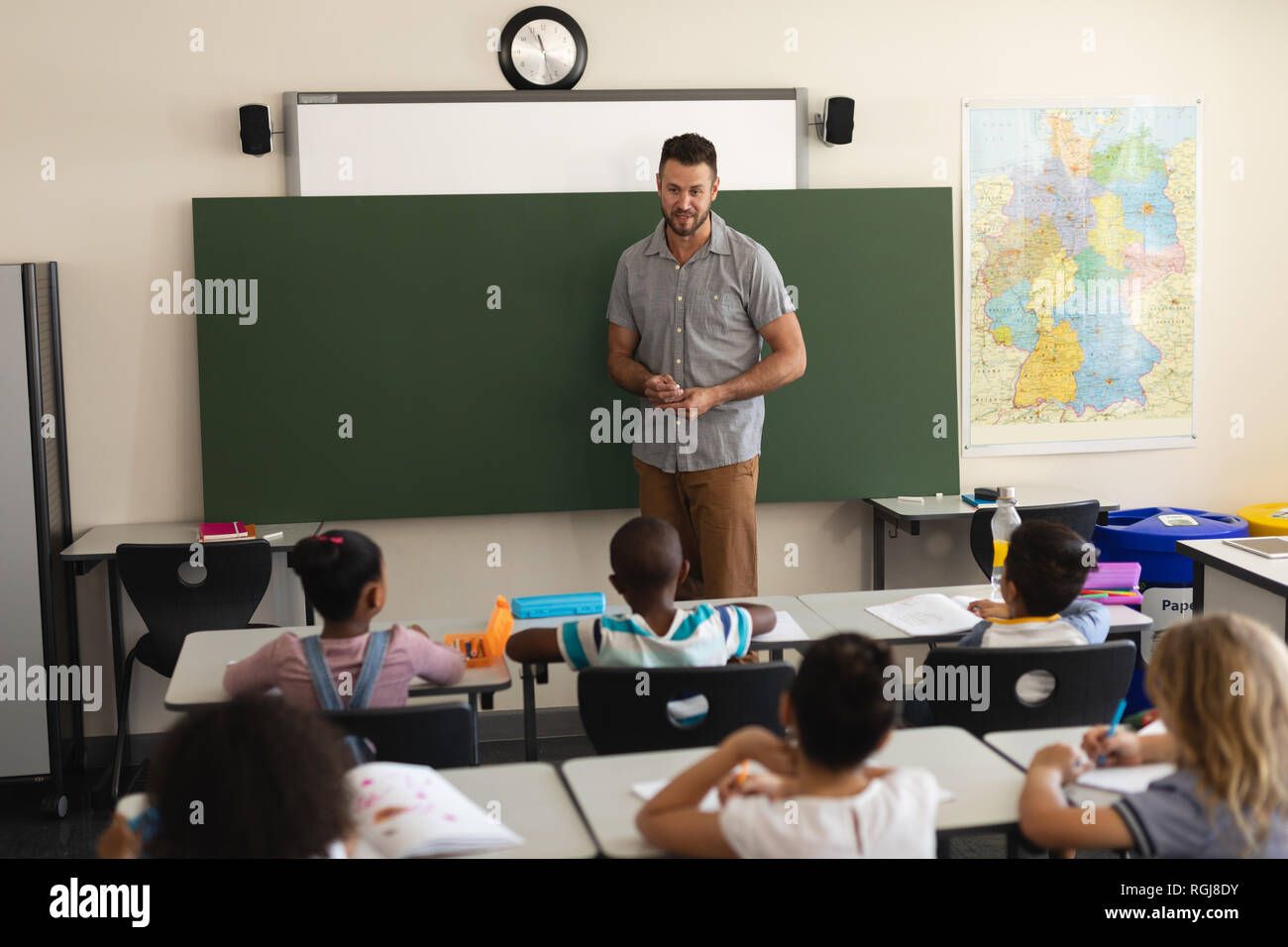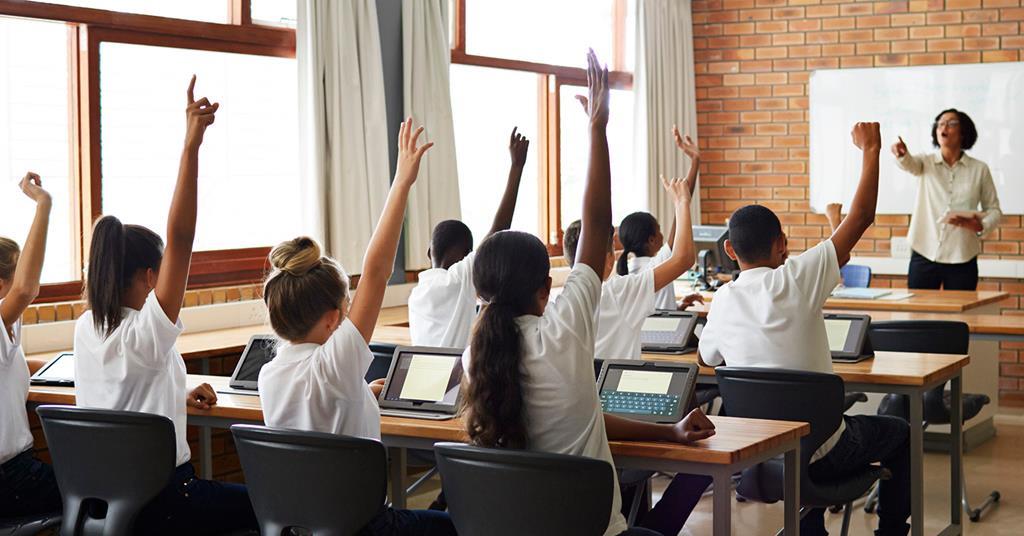Get Top Results with Primary Science Tuition Singapore from Experienced Tutors
Get Top Results with Primary Science Tuition Singapore from Experienced Tutors
Blog Article
Exploring the Various Teaching Techniques in Primary Scientific Research Education Today
The landscape of main scientific research education is developing, with various mentor strategies gaining prominence in modern class. Inquiry-based knowing, hands-on experiments, and the integration of modern technology are redefining how instructors engage young minds. Additionally, joint strategies and separated direction are being employed to accommodate the varied requirements of pupils, enhancing both involvement and understanding. As we examine these techniques, questions arise concerning their performance and the ramifications for future instructional practices. What might these changes in approach mean for the following generation of learners?
Inquiry-Based Understanding
Inquiry-Based Learning (IBL) is an instructional method that encourages students to discover clinical concepts with questioning, examination, and hands-on trial and error. This technique emphasizes the function of pupils as active participants in their knowing, promoting crucial reasoning and analytical skills. By involving with real-world questions, pupils become determined and interested, which enhances their understanding of scientific principles.
In IBL, educators serve as facilitators, directing students as they browse their questions instead than providing info directly. This student-centered strategy permits distinction, accommodating various finding out rates and styles. Trainees create abilities in developing theories, designing experiments, and assessing data, which are critical for clinical literacy.
In addition, IBL fosters partnership among pupils, motivating them to share concepts and findings. This collective questions promotes social skills and a feeling of area within the class. In addition, the procedure of inquiry urges strength, as trainees find out to embrace failing as a tipping rock towards understanding.
Hands-On Experiments
Hands-on experiments are a vital part of efficient science education, enhancing the principles of inquiry-based knowing. These experiments allow pupils to involve directly with clinical concepts, cultivating a much deeper understanding via experiential discovering. By controling materials and observing results, young learners can understand abstract concepts in tangible ways.
Such activities promote vital thinking and analytical skills, as trainees hypothesize end results, conduct experiments, and analyze outcomes. This process encourages them to ask questions, refine their understanding, and create a clinical state of mind. Hands-on experiments can be customized to varied understanding styles, guaranteeing that all pupils have the chance to involve meaningfully with the web content.
In addition, hands-on experiments typically motivate collaboration among peers, promoting synergy and communication skills. Working in groups enables trainees to share ideas, talk about searchings for, and pick up from one an additional, which boosts their general instructional experience.
Integrating hands-on experiments right into the primary science curriculum not just improves the finding out environment but also grows a lifelong passion in science. By actively taking part in their education, students are a lot more likely to develop an interest for clinical questions that prolongs beyond the class.

Innovation Integration
Incorporating modern technology into main scientific research education has ended up being significantly necessary in cultivating trainee interaction and improving discovering end results. Making use of digital tools, such as interactive simulations, virtual labs, and instructional software program, supplies pupils with opportunities to check out scientific ideas in cutting-edge means. These sources facilitate a much deeper understanding of complex topics by allowing learners to picture and manipulate variables that would be not practical in a conventional class setup.
In addition, innovation assimilation encourages customized finding out experiences. Trainees can proceed at their very own rate, reviewing challenging concepts through multimedia resources, which accommodate various understanding designs. This adaptability not only supports individual growth however also grows a sense of autonomy in learners.
Additionally, innovation acts as a bridge to real-world science, linking pupils with existing research and specialist contributions. Accessibility to on-line data sources and clinical journals broadens students' point of views on clinical inquiry and cultivates vital assuming abilities.
Collaborative Understanding
Joint understanding plays a crucial function in key scientific research education and learning by fostering synergy and communication skills amongst trainees. This approach urges students to interact, look these up share expertise, and take part in problem-solving, which improves their understanding of clinical ideas. By participating in team tasks, trainees learn to express their concepts, listen to varied perspectives, and work out options, every one of which are important skills in both academic and real-world contexts.
:max_bytes(150000):strip_icc()/GettyImages-1475870499-b4c3034fc17f494ea9aba128e6140d6e.jpg)
Study shows that collaborative learning can result in boosted motivation and involvement in science topics, as pupils discover satisfaction in shared experiences (primary science tuition Singapore). Additionally, this strategy prepares pupils for future collaborative undertakings, equipping them with the skills necessary for effective teamwork in higher education and learning and expert atmospheres. Eventually, welcoming collaborative knowing in main science education can substantially improve the knowing experience and promote a much deeper understanding of clinical questions
Differentiated Instruction

Distinguished direction can manifest in different ways, such as differing the content, processes, or products of knowing. As an example, instructors might utilize tiered why not check here assignments that give differing levels of intricacy, permitting pupils to operate at their respective preparedness degrees. Additionally, flexible organizing strategies can promote collaboration among pupils with various capacities, fostering peer knowing.
Assessment plays a critical role in this approach, as it notifies guideline and aids teachers understand each pupil's special demands. Formative analyses, such as tests and observations, can lead teachers in changing their strategies to enhance discovering end results. primary science tuition Singapore. Ultimately, by carrying out distinguished direction in primary scientific research education and learning, educators can grow a more efficient and equitable learning environment, empowering all trainees to reach their full potential in comprehending scientific phenomena
Conclusion
In recap, the diverse mentor techniques in main scientific research education and learning, including inquiry-based understanding, hands-on experiments, innovation integration, joint understanding, and distinguished direction, jointly add to an extra effective knowing environment. These approaches promote vital reasoning, analytic skills, and a much deeper her comment is here comprehension of scientific concepts. By applying these approaches, educators can develop helpful and engaging classrooms that resolve the diverse requirements of pupils, eventually fostering a lifelong rate of interest in scientific research and boosting academic achievement.
Inquiry-Based Knowing (IBL) is a pedagogical approach that urges students to check out scientific ideas via doubting, examination, and hands-on trial and error.Collaborative discovering plays a vital duty in primary science education and learning by promoting team effort and communication abilities amongst students.Study shows that collective discovering can lead to raised inspiration and interaction in science topics, as students find satisfaction in shared experiences.In promoting a comprehensive discovering atmosphere, differentiated direction emerges as an essential strategy to accommodate the varied demands and capacities of trainees in key science education. Ultimately, by executing distinguished instruction in key scientific research education, educators can grow a much more reliable and fair learning setting, empowering all trainees to reach their complete potential in understanding clinical sensations.
Report this page